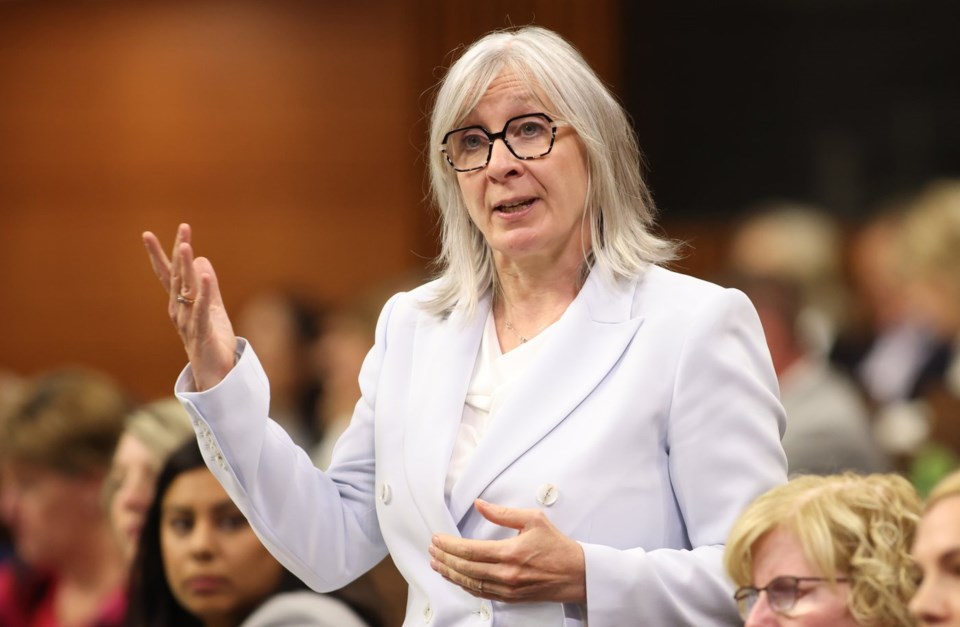OTTAWA ŌĆö The chief of a First Nation in northern Manitoba says its nursing station is operating at half-capacity, and as a result members are going without the care they need.
"Health care is supposed to be universal ŌĆö it's supposed to be comprehensive, accessible, affordable and properly funded," said Chief David Monias of Pimicikamak Cree Nation.
"None of those principles are being applied."
His community is supposed to have 13 or 14 nurses available, but most days there are only five or six, he said.
Because there's not enough staff, those nurses are mainly handling emergency situations while patients with diseases like diabetes and hypertension are left without necessary routine care.
And when such ailments become dire, patients are being flown to Winnipeg, because the station isn't equipped to handle acute issues.
The situation became so untenable earlier this year that they had to declare a state of emergency.
"We have people with brain tumours that were not diagnosed," said Monias. "It's not until they get sent out to Winnipeg that they find there is something wrong with them."
When the federal government hires nurses to work in the First Nation, they don't always stay because their roles are meant to be transferable to several different communities depending on need.
Some people have quit altogether because they burned out due to overwork, he said.
Government data show that nursing stations in remote First Nations communities in Manitoba were facing a 67 per cent operational vacancy in the last fiscal year.
Others in Ontario are not much better off, according to numbers tabled in the House of Commons last month in response to an NDP MP's written question.
The document says that over the 2023-24 fiscal year, all Indigenous Services sa╣·╝╩┤½├Į-operated nursing stations in Manitoba have run at a reduced capacity due to staffing shortages.
Indigenous Services employs nurses in 50 remote or isolated nursing stations in Alberta, Manitoba, Ontario and Quebec.
"To avoid closures and maintain essential emergency services (in Manitoba), the region has had to triage and relocate registered nurses, licensed practical nurses, paramedics and other allied professionals," the document says.
Indigenous Services Minister Patty Hajdu said her department is trying to increase the volume of applicants in remote communities, and noted the nursing shortage is being felt countrywide.
"We kind of have to do the short-term fix with trying to lure more nurses to remote communities, but also keep focused on that longer-term capacity-building for First Nations so they have the ongoing commitment of people who want to stay in that community," said Hajdu.
Monias said his community is interested in taking control of its nursing station, but does not want to be responsible for a system they didn't break.
"It would be nice to have our own local hiring authority to be able to hire these people, and they can work for us so they don't get sent out anywhere else," he said.
"But we know that once you do that, once you accept (the responsibility for health care), it's hard to turn the ship around because it's so big."
The federal government recently released job postings for nurses in remote First Nations communities in Manitoba, Alberta and Ontario.
The posting for Manitoba says those hired will be flown from St. Andrews to a number of First Nations on rotations.
Nurses can be paid up to $6,750 as a recruitment allowance after their first month working, and up to $16,500 as a retention allowance in their second year on top of their base annual salary.
"The department is doing what it can do," said Hajdu, but the solution to the crisis will come when First Nations have local capacity to hire nurses from their own communities.
With that, the labour pool will be stronger because they won't need to lure more nurses to remote communities, she said.
This report by The Canadian Press was first published June 14, 2024.
Alessia Passafiume, The Canadian Press


